Health
Examine the relationship between self
This study found that participants reported a significant amount of self-injury, averaging 109.27, highlighting a substantial engagement in these behaviors, often driven by difficulties in managing emotions. Participants demonstrated varying coping strategies, reflected in average scores of 40 for cognitive emotion regulation and 63.72 for behavioral emotion regulation. Crucially, we observed strong negative correlations between […]
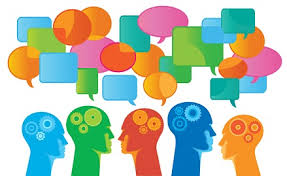

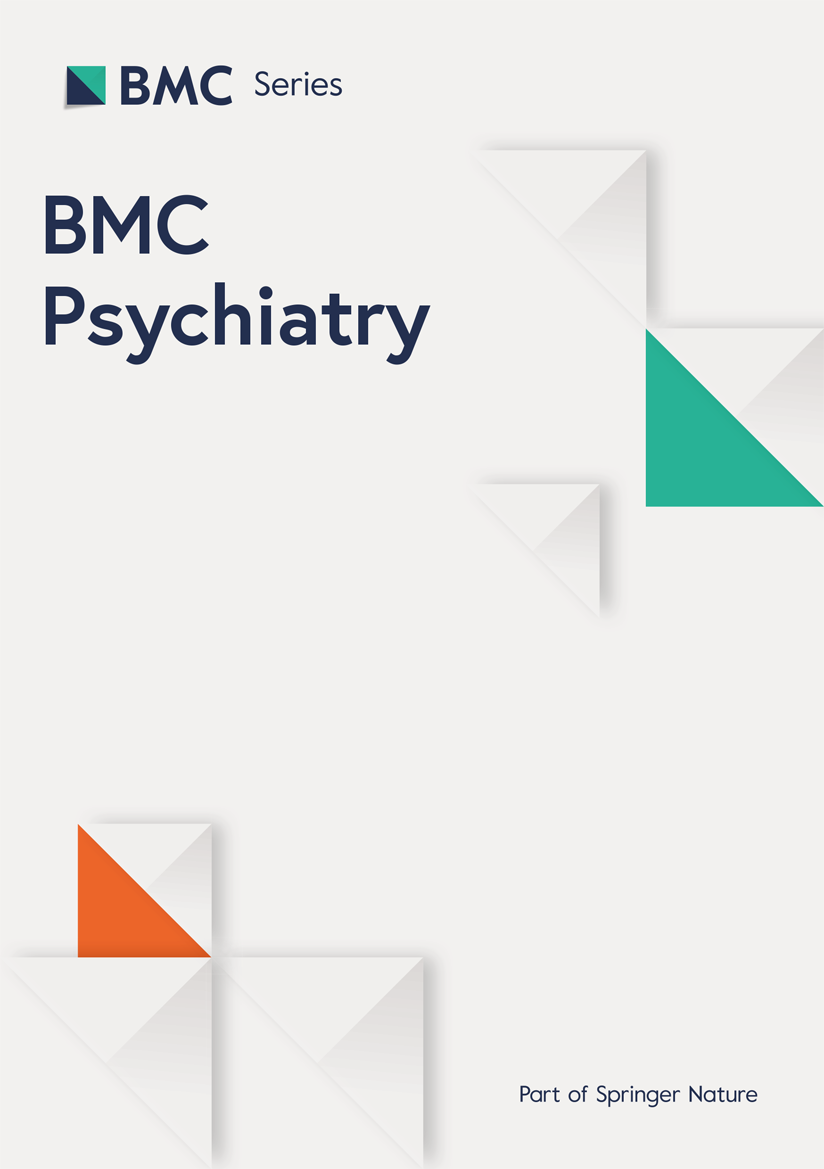
This study found that participants reported a significant amount of self-injury, averaging 109.27, highlighting a substantial engagement in these behaviors, often driven by difficulties in managing emotions. Participants demonstrated varying coping strategies, reflected in average scores of 40 for cognitive emotion regulation and 63.72 for behavioral emotion regulation. Crucially, we observed strong negative correlations between both cognitive regulation (r = -0.64, p = 0.001) and behavioral regulation (r = -0.73, p = 0.001) and self-injury. This means that poorer cognitive regulation and more pronounced behavioral regulation were linked to higher instances of self-injury. Further analysis, using multiple regression, confirmed that these two emotion regulation styles accounted for 42% of the variation in self-injury, with behavioral regulation showing a particularly strong predictive effect. In essence, these results emphasize the critical role of emotion regulation interventions in supporting adolescents vulnerable to self-injury.
The present study revealed a concerning prevalence of self-injury among Iranian adolescent athletes. While self-injurious behavior can be transient, this study, conducted at a specific point in time, offers a valuable snapshot of prevalence within this population. This finding aligns with broader research indicating the presence of self-injury among youth. In this line, it is estimated that 3–7% of adolescents meet the criteria for self-injury [33]. Previous studies have shown that 32% of children and adolescents suffer from some type of anxiety disorder [34]. This suffering can be due to lack of self-confidence, low self-esteem, or feelings of hopelessness due to poor social and academic performance [35]. Studies indicate that between 30% and 50% of these cases of anxiety in adolescents are associated with another type of behavioral disorder such as self-injurious behavior, aggressive behaviors, eating disorders, and conduct disorder [36]. Furthermore, 80% of adolescents with these conditions do not receive any professional treatment or care [37]. Therefore, it is essential to prioritize attention to adolescents, particularly regarding self-injurious behaviors.
Furthermore, results of the present study indicated a significant negative relationship between cognitive emotion regulation and self-injury. This suggests that improved cognitive emotion regulation skills may serve as a protective factor against self-injury. This aligns with theoretical frameworks of self-injury, such as the experiential avoidance model [38], and the cognitive-emotional model [39, 40], which emphasize the role of poor cognitive emotion regulation in self-injury. These models posit that difficulties in cognitive emotion regulation contribute to self-injury by hindering individuals’ ability to manage distressing emotions effectively.
In the specific context of adolescent athletes, the interplay between cognitive and behavioral emotion regulation and self-injury may exhibit unique characteristics [23]. While general models highlight the protective role of strong emotion regulation, the high-pressure environment of competitive sports could potentially exacerbate emotion regulation deficits [1]. Athletes may experience intense performance anxiety, pressure to succeed, and fear of failure, which could overwhelm their coping mechanisms. Additionally, the emphasis on physical strength and emotional resilience within sports culture might discourage athletes from seeking help for emotional distress, leading to maladaptive coping strategies like self-injury. Therefore, it might be the reason that adolescent athletes may face heightened challenges in emotion regulation compared to non-athlete populations.
Furthermore, the present findings resonate with Hasking, Whitlock, Voon and Rose [40] cognitive-emotional model of self-injury. This model incorporates the role of specific cognitions about self-injury alongside emotional experience and regulation. Individuals exhibiting heightened emotional reactivity, difficulty tolerating distress, and impaired emotion regulation, coupled with a belief in their inability to resist self-injurious urges and an expectation of positive outcomes from self-injury, demonstrate a higher likelihood of engaging in these behaviors. Conversely, individuals without a history of self-injury typically possess stronger self-efficacy beliefs regarding their ability to resist such urges [40].
On the other hand, the present study found a significant negative relationship between behavioral emotion regulation and self-injury. Previous study on behavioral emotion regulation and self-injury has almost exclusively focused on the idea that poor behavioral emotion regulation are risk factors for self-injury [18, 24]. The present study showed that behavioral emotion regulation and self-injury actually have a bidirectional and inverse relationship, such that engaging in self-injury may impair emotion regulation. This finding is consistent with personal accounts of individuals with a history of self-injury who are often afraid that disclosing self-injury will damage their relationships with coaches, teammate and family [5, 41, 42]. The present finding can be explained by the theory of emotional processes in the psychophysiological arousal model [43]. Defective processes in emotion analysis can play a significant role in self-injurious behavior. Unstable, impulsive, and out-of-control emotions can lead to self-injury and suicide. Pervious systematic review studies [19, 36] identified higher rates of self-injury among individuals with unstable emotions. Therefore, it seems that behavioral regulation and attention to healthy behavioral coping styles can play a significant role in reducing self-injury. Our finding is in line with Adrian, Zeman and Veits [44] and Sim, Adrian, Zeman, Cassano and Friedrich [45]. As a result, access to behavioral and cognitive emotion regulation strategies, defined as “beliefs and behaviors to use when a person is upset,” is important. Our finding, consistent with the claim of Gratz and Roemer [46] showed that after controlling for other aspects of impaired emotion regulation, a significant association with self-injury remained.
The results of the present study showed that cognitive and behavioral emotion regulation can predict the level of self-injury. Adolescents with poor emotion regulation usually report self-injury [40]. Consistent with previous research [47, 48], the present study found significant negative correlations between emotion regulation and self-injury. These findings suggest that poorer behavioral and cognitive emotion regulation is associated with increased self-injury. However, given the cross-sectional design of this study, we can only establish associations, not causal pathways. Further longitudinal or experimental research is needed to determine the direction and nature of this relationship.
In therapeutic interventions for adolescent athletes who engage in self-injury, it’s beneficial to prioritize the development of stronger, more supportive relationships with coaches and peers. Specifically, fostering trust, open communication, and a sense of warmth within these key relationships can be a valuable component of the intervention [24, 49]. In addition, addressing cognitive and behavioral emotion regulation appears promising for reducing adolescent self-injury. Educational programs that frame self-injury as a maladaptive emotional regulation strategy may enhance coaches’ and teammates’ understanding, facilitating more effective support for adolescents struggling with emotions like fear or sadness. Furthermore, prioritizing coaches’ self-care may prove beneficial. While this study confirms the predictive power of emotion regulation in relation to self-injury, further investigation is needed to elucidate the specific mechanisms and contextual factors that exacerbate the link between emotion dysregulation and self-injury [24].
This finding is consistent with previous research showing that difficulty in regulating behavioral and cognitive emotion is a predictor of self-injury [46]. According to various theories, a person who has difficulty in emotion regulation is more likely to self-injure. This claim is consistent with the experiential avoidance model [38] and general emotion regulation models [5]. Self-injury is used as a tool of maladaptive emotional expression in some adolescents. This strategy will not be effective and negative emotions will continue and even become dominant. One of the important factors in the continuation of self-injury is the belief in the inefficiency of emotion regulation. This distinction is very important clinically, because it points to the possibility of reconstructing cognitions about the effectiveness of emotion regulation as an important aspect of self-injury treatment. As a result, the present study has the clinical benefit value of emotional regulation in an adolescent athlete.
While this study provides valuable insights into the relationship between emotion regulation and self-injury among Iranian adolescent athletes, it is important to acknowledge the limitations regarding generalizability. The findings may not be directly applicable to non-athlete adolescents or those from different cultural backgrounds. Cultural variations in emotion regulation strategies and self-injury motivations could significantly influence the observed associations. For example, the unique stressors and cultural norms within the Iranian athletic context may contribute to specific patterns of emotion regulation and self-injury that differ from those seen in other populations. Therefore, caution is warranted when extrapolating these results to broader populations. Future research should explore these relationships in diverse samples to enhance the generalizability of the findings. The current study suggests that coaches and teammates could play a role in intervention efforts, given their frequent interaction with adolescent athletes. However, it’s important to acknowledge that this suggestion is based on the context of the athletic environment rather than direct empirical evidence within this study. The role of parental influence, school-based mental health services, and professional therapeutic interventions was not explicitly examined, which limits our understanding of the broader support network. Future research should investigate the efficacy of multi-faceted intervention approaches, including the involvement of parents, school counselors, and mental health professionals, to develop comprehensive and effective support systems for adolescent athletes at risk of self-injury. A more thorough exploration of these diverse intervention strategies would enhance the practical implications of our findings and inform the development of targeted support programs. Furthermore, third limitation of this study is the absence of a confirmatory factor analysis to re-evaluate the structural validity of the Self-Injurious Behaviors Scale, Behavioral Emotion Regulation Questionnaire, and Cognitive Emotion Regulation Questionnaire within our specific adolescent athlete population. While these scales have demonstrated adequate validity in previous research, including studies with adolescent samples, we did not specifically assess their factor structure within this unique group. Therefore, while we relied on established validity from prior studies, future research should consider examining the factor structure of these instruments within adolescent athlete populations to ensure their applicability and accuracy in this context.
Health
Powell Selected to Participate in MLB Breakthrough Series for Second Consecutive Year
Story Links BOWIE, MD — Bowie State University head softball coach Ed Powell has been selected to participate in the MLB Breakthrough Series, held at the Kansas City Urban Youth Academy from Saturday, June 21 through Thursday, June 26 in Kansas City, Mo. This marks the second consecutive year Powell has received this prestigious invitation. “I’m […]
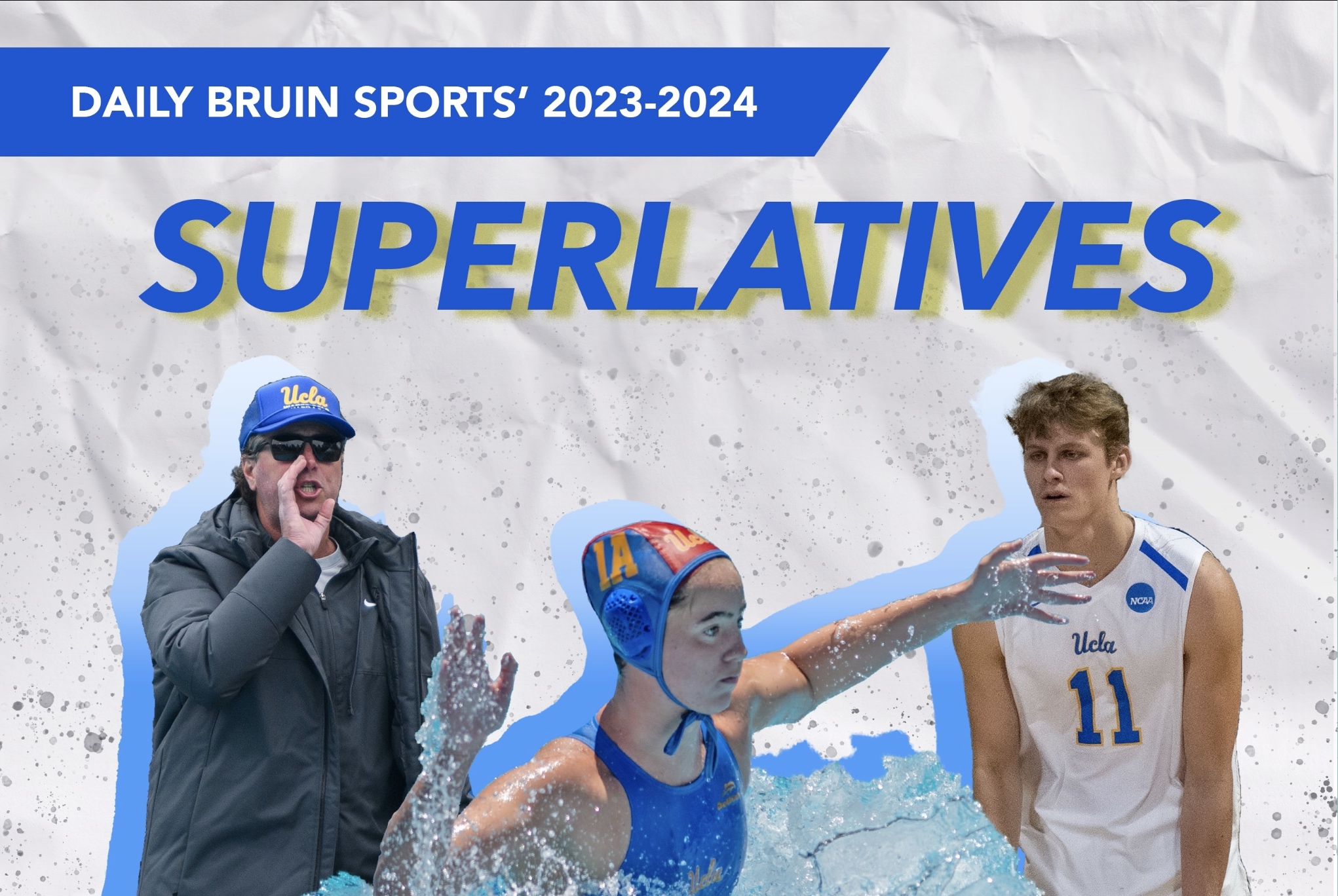
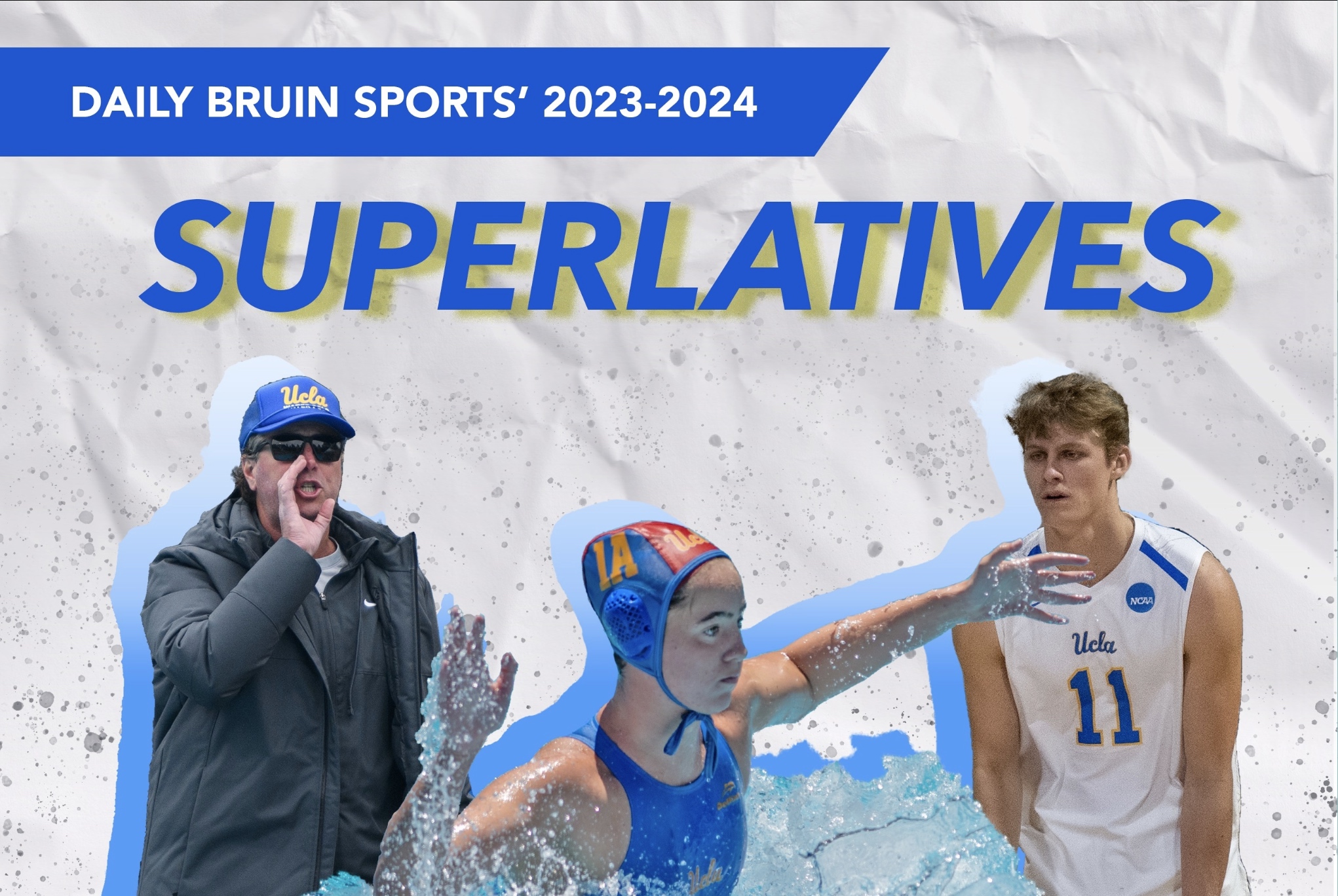

BOWIE, MD — Bowie State University head softball coach Ed Powell has been selected to participate in the MLB Breakthrough Series, held at the Kansas City Urban Youth Academy from Saturday, June 21 through Thursday, June 26 in Kansas City, Mo. This marks the second consecutive year Powell has received this prestigious invitation.
“I’m truly honored to be part of the MLB Breakthrough Series once again,” said Powell. “This program is so much more than a showcase, it’s an opportunity to empower and uplift some of the most talented and dedicated young softball players in the country. Helping these athletes grow not just on the field, but as leaders and individuals, is what makes this experience so meaningful. It’s a privilege to contribute to a platform that opens doors and leaves a lasting impact on their lives.”
Powell will be one of two head coaches from the Central Intercollegiate Athletic Association (CIAA) selected to participate in the Breakthrough Series, joining Bluefield State head coach Chelsea Holliday.
About Softball Elite Development Invitational
The Elite Development Invitational is a multi-day, 18 and under training camp that features intense on-field softball development and game play along with various off-field development sessions covering topics such as college recruiting, mental health and women in sports.
The event is coached by current and former USA Softball Women’s National Team athletes, professional softball players and college coaches. Participants represent some of the top athletes from the MLB Youth Academy and Nike RBI network.
For more information about the MLB Breakthrough Series, please click HERE.
For the most up-to-date information on Bowie State Athletics and its 13 varsity sport teams, visit bsubulldogs.com.
Health
Letting Transgender Kids Play Sports Can Benefit All Kids
President Donald Trump’s raft of anti-LGBTQ+ executive orders affects many aspects of the lives of LGBTQ+ people, including their sports participation, access to healthcare, and ability to serve in the military. One executive order seeking to ban transgender athletes from participating in girls’ and women’s sports, is surprisingly picking up some Democratic support. Recently, Senator […]



President Donald Trump’s raft of anti-LGBTQ+ executive orders affects many aspects of the lives of LGBTQ+ people, including their sports participation, access to healthcare, and ability to serve in the military.
One executive order seeking to ban transgender athletes from participating in girls’ and women’s sports, is surprisingly picking up some Democratic support. Recently, Senator Ruben Gallego, a Democrat from Arizona said banning trans students from girls’ and women’s school sports might be “legitimate” and argued that trans girls put cisgender girls at risk during sporting events. However, this is a damaging myth that fuels anti-trans stigma, harassment, intimidation, and discrimination and reinforces misogynistic stereotypes that girls are weak and need protection.
Advertisement
It’s not the first time a Democrat has capitulated to Republican anti-trans messaging. In Oct. 2024, during his long-shot attempt to unseat Senator Ted Cruz in Texas, Democrat Colin Allred released a campaign ad in which he seemed to oppose the participation of trans girls in sports. And in March 2025, California Governor Gavin Newsom, speaking on the first episode of his new podcast “This Is Gavin Newsom,” said it was “deeply unfair” for trans athletes to participate in women’s sports.
We are not totally naïve—we get why a handful of Democrats are joining Republicans in wanting to ban trans kids from participating in sports teams consistent with their gender identities. These democratic legislators likely think their stance will appeal to “centrist” voters; recent public polling suggests that about two-thirds of U.S. adults support such bans. But we still firmly believe that such bans are misguided, harmful, and built on falsehoods, perpetuating harmful stereotypes and inequities.
Advertisement
Democrats should not be willing to throw transgender kids under the bus just for electoral considerations. Trans kids face higher rates of multiple physical and mental health difficulties than their cis peers—largely due to how our society treats the transgender community. But when they’re allowed to play sports, these rates fall. What’s more, states with policies allowing trans girls to play sports have seen increased rates of sports participation by cis girls. In other words, letting trans girls play sports benefits all girls. Shouldn’t politicians be championing the benefits of sport for all?
To understand why such bans are damaging, let’s back up and consider the lives of trans youth. A study by the Williams Institute at UCLA School of Law estimates that there are about 300,100 trans kids (ages 13-17) in the U.S., making up just 1.4% of all youth in that age range. The Center for American Progress notes that trans youth face “high rates of family rejection, violence, discrimination, and suicidality.” Suicidality is shockingly common: the Centers for Disease Control conducts a national survey of high school students every two years to explore health-related behaviors, called the Youth Risk Behavior Survey (YRBS), and the 2023 survey found that 53.8% of trans youth had seriously considered suicide, compared to 20.4% of the general youth population. Research has shown that trans kids are also at increased risk of depression, anxiety, substance misuse, and impaired quality of life.
Advertisement
The good news is that sports can be a real lifeline. The research is clear: when trans youth are allowed to participate in sports, these mental health risks fall. For example, trans students in states with fully inclusive athletics policies are less likely to have considered suicide than students in states without such policies. Megan Bartlett, founder of the Chicago-based non-profit The Center for Healing and Justice Through Sport, told The Guardian that sports “can be life-saving—especially for marginalized young people – because it can actually change your brain.” When kids are in sports teams, she said, the positive relationships help make them “feel safe and practice being stressed but being able to deal with that stress,” which builds lifelong resilience. Trans kids at inclusive schools are also less likely to experience harassment and victimization. For all adolescents, participating in a sports team can reduce anxiety, depression, and feelings of loneliness.
Advertisement
Letting trans kids play sports also improves their physical health. Trans kids have worse physical health than their peers—including higher rates of obesity and of risk factors for cardiovascular disease, like abnormal cholesterol levels—which are thought to be due to the stress of marginalization. But research has shown that playing sports lowers their risk of obesity and improves their cardiovascular health.
The benefits go even further. Trans kids who are allowed to play sports in accordance with their gender identity are more likely to feel like they belong at school and more accepted by their peers. Sports help all kids gain skills in team building, management skills, commitment, and leadership. And there’s even evidence that LGBTQ student athletes have higher grade point averages than those who do not play sports.
Unfortunately, several myths about trans student athletes are being promoted by supporters of school sports bans. We believe these need to be challenged.
Advertisement
The first myth, pushed by Senator Gallego, is that anti-trans sports bans are needed to protect cisgender girls. There is no evidence that trans-inclusive policies are harmful to cis girls; indeed, trans boys and girls have been openly participating in high school sports for many years now, with no documented evidence of any harm to cis kids. States that have adopted inclusive policies have seen steady or increasing rates of participation by all youth. For example, California and Connecticut, which have allowed trans kids to play sports on the team of their choice, have seen participation of all girls increase. For instance in California, participation among girls in sports has increased by almost 14% from 2014 to 2020.
The second myth, peddled by Governor Newsom, is that trans kids have an unfair advantage in sports. Trans kids vary enormously in their sporting ability, just like cis kids. Some play well and some play poorly, just like cis kids. Trans kids are all different heights, sizes, and strengths, just like cis kids. Whether any kid excels at sport is most often related to factors like how hard they train and what kind of access they have to good coaches. As the ACLU argues, when a trans kid does well at sport, they should be “celebrated for their hard work, not demonized because of who they are.”
Advertisement
Other myths abound. For instance, some conservative politicians and organizations push the fiction that massive numbers of trans kids are now “dominating” high school sports. In reality, one study using CDC data found that only 40.7% of trans kids in grades nine through 12 played on at least one sports team. If we apply this percentage to the 300,100 trans kids aged 13-17 in the U.S., only 122,000 trans kids are playing sports out of a total of about 21 million kids in this age rage. This means that trans kids make up an extremely tiny fraction of those in sport.
Another false narrative claims that inclusive policies change the nature of girls’ sports. But as the ACLU notes, that trans girls’ “participation in the girls’ category does not change the nature of the category.” Inclusive policies do not undermine Title IX protections, and girls’ sports have thrived in states that adopted such policies. This is why many women’s rights advocacy groups support inclusion of trans people in sports.
Advertisement
Trans kids just want the same opportunities as their peers. They want to be on sports teams to have fun, get exercise, and hang out with their friends. Just like any other kid. When we deny them that right, we are actively causing harm that could easily be avoided. And, in the end, this discriminatory behavior hurts us all.
Health
Tristan Thompson Named Chief Advisory Officer for DeSci Platform AxonDAO
Tristan Thompson has been keeping himself busy, as he continues to make waves in the Web3 space. Months after launching TracyAI, the Cleveland Cavaliers center was announced as the Chief Advisory Officer for AxonDAO, a decentralized science (DeSci) platform that aims to revolutionize healthcare through AI and blockchain technology. AxonDAO’s operating company, AXDT Inc., announced Thompson’s appointment in a press release […]
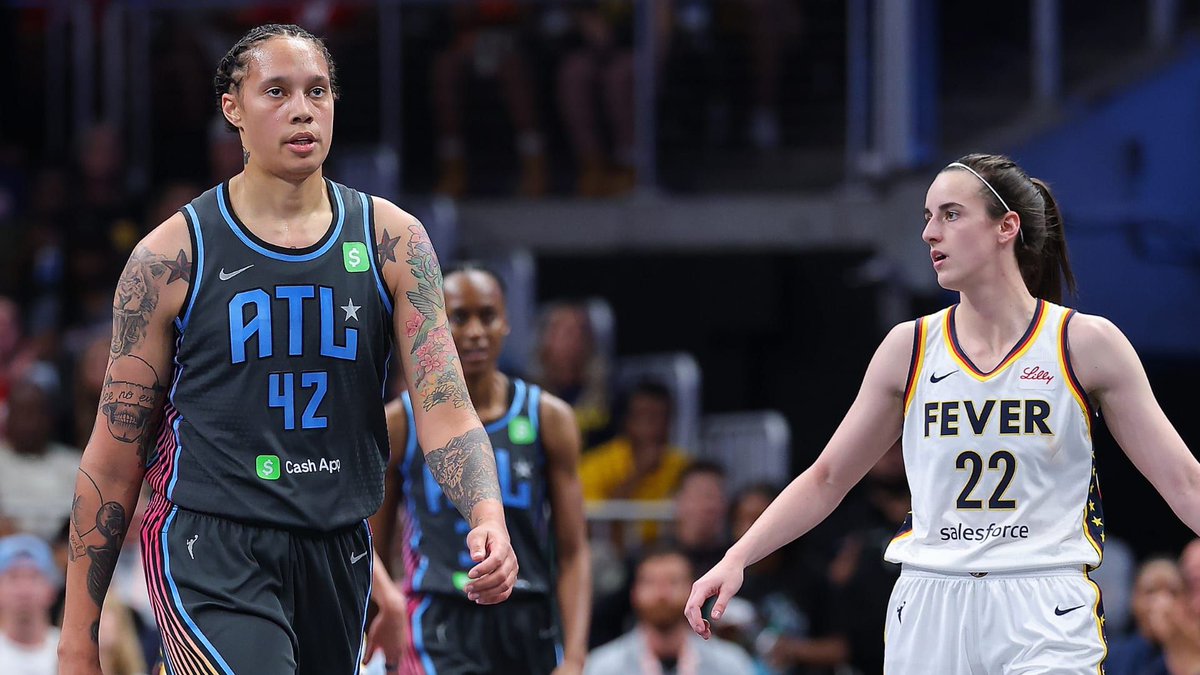
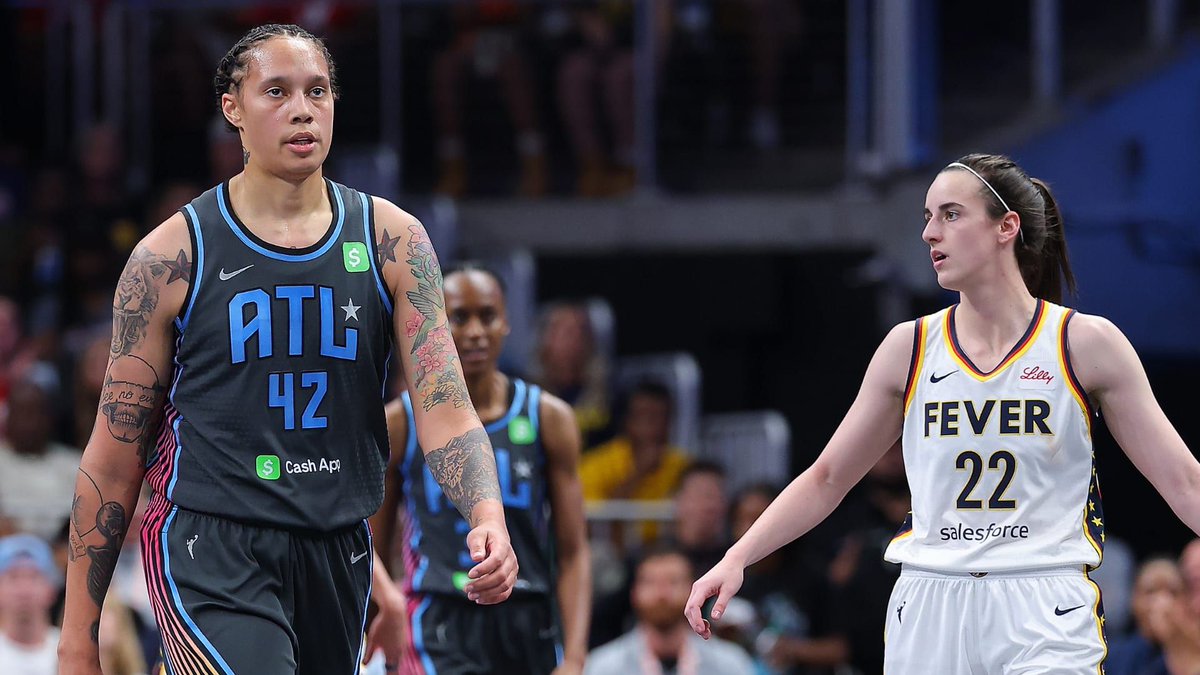

Tristan Thompson has been keeping himself busy, as he continues to make waves in the Web3 space.
Months after launching TracyAI, the Cleveland Cavaliers center was announced as the Chief Advisory Officer for AxonDAO, a decentralized science (DeSci) platform that aims to revolutionize healthcare through AI and blockchain technology.
AxonDAO’s operating company, AXDT Inc., announced Thompson’s appointment in a press release on Thursday (June 19), stating that Thompson was drawn to the company’s mission to “return control of health data to individuals; reward ethical research participation through blockchain-powered incentives; and accelerate innovation in wellness domains such as nutrition, recovery, cannabis and psychedelics, and music-based therapy.”
“Health is wealth. I believe in giving people ownership over their wellness journey, and AxonDAO is building the future of health, data and science in a way that includes everyone,” Thompson said in a statement.
As the Chief Advisory Officer, Thompson will help AxonDAO expand into athlete-specific health markets, helping craft campaigns and marketing strategies that focus on recovery, sleep, nutrition and mental health. He will also lead outreach to other high-profile figures, including his fellow professional athletes.
“Athletes understand the importance of recovery, focus, and self-awareness,” he said. “What we’re building with AxonDAO doesn’t just benefit professionals – it helps people live better, longer, and stronger lives.”
Health
Alessia Russo explains why she's ditched social media
Russo reflects on the mental toll of online abuse as she prepares for Euros campaign Photo by Justin Setterfield/Getty Images Alessia Russo has revealed she no longer uses social media during major tournaments after admitting she was previously “sucked into” reading abusive comments that affected her focus and wellbeing. Advertisement Advertisement Advertisement The Arsenal and […]


Russo reflects on the mental toll of online abuse as she prepares for Euros campaign

Photo by Justin Setterfield/Getty Images
Alessia Russo has revealed she no longer uses social media during major tournaments after admitting she was previously “sucked into” reading abusive comments that affected her focus and wellbeing.
Advertisement
The Arsenal and England striker, who is preparing for next month’s UEFA Women’s European Championship in Switzerland, spoke candidly about the psychological cost of exposure to online criticism, calling it “really damaging” and urging fellow athletes to protect themselves from it.
“I think every player might have a different story about that side of the game, but it’s definitely one that can be really damaging,” Russo said. “I have faced it in the past and I think most players here have. When I was younger I probably got sucked into it more. I read it more than I should have and listened to it more than I should have. The only opinions that matter are my team-mates, my coaches and my family.”
Russo continued: “I think you have to remember that they are the people you need to lean on in tough times. As I’ve got older, I understand more what works for me. In my first Euros I was on social media and I would have a look, have a scroll, and I got caught in a trap sometimes.

Photo by Catherine Steenkeste/Getty Images
“Going into the World Cup, I completely came off everything and I had people to run my Instagram. I just focused on the tournament. Staying away from it and staying focused as a team is what works for me.”
Advertisement
Her comments came a day after Katie Boulter, Britain’s top-ranked female tennis player, revealed she and her family had received death threats following tournament defeats. Russo said she could “empathise completely” with that experience, stressing the need for athletes to prioritise their mental health.
The 26-year-old heads into the summer in arguably the best form of her career, having played a decisive role in Arsenal’s UEFA Women’s Champions League triumph. She scored seven goals in 11 matches in the competition, alongside 12 goals in the Women’s Super League.
Health
Fox Soars To Second PacWest Scholar
Story Links IRVINE, Calif. – Add one more awesome honor to the resume of recent Concordia University Irvine alum Dylan Fox. The three-time All-American and three-time PacWest Champion in the long jump was named the PacWest Men’s Track & Field Scholar-Athlete of the Year for the second time in his incredible Concordia career. The Irvine, Calif. […]



IRVINE, Calif. – Add one more awesome honor to the resume of recent Concordia University Irvine alum Dylan Fox.
The three-time All-American and three-time PacWest Champion in the long jump was named the PacWest Men’s Track & Field Scholar-Athlete of the Year for the second time in his incredible Concordia career.
The Irvine, Calif. native sported a 3.91 GPA in business administration. He was also voted the Men’s Track & Field Scholar-Athlete of the Year by the PacWest sports communicators in 2023.
A graduate of nearby Irvine High School, Fox finished 11th, 10th, and then 8th in the long jump on the national stage at the NCAA DII Championships the past three years. He is Concordia’s first three-time All-American on the men’s track and field side in the NCAA DII era, capturing Second Team honors the past two seasons before capping it off with First Team All-American honors in May.
Fox was also honored last month as Concordia’s Male Athlete of the Year during the 2025 Senior Legacy Award Banquet.
Health
Sports that can help compel seniors to get up and move
Discussions about the benefits of sports participation are often rooted in how much young people can gain from playing a team sport. Older adults have much to gain from playing sports as well, and that’s something retirees can keep in mind as they look for activities to fill their time. A study published in the […]



Discussions about the benefits of sports participation are often rooted in how much young people can gain from playing a team sport. Older adults have much to gain from playing sports as well, and that’s something retirees can keep in mind as they look for activities to fill their time.
A study published in the journal Biochemistry Research International found that physical activity can be a protective factor for noncommunicable diseases, including heart disease and diabetes, and can even help to delay the onset of dementia. The study also linked physical activity to improved quality of life and mental health. Sports require players to be physically active, so seniors who decide to dust off their athletic gear and play the following sports can reap all the rewards that getting up and moving has to offer.
Golf: Golf provides a range of health benefits that committed players are well aware of. Seniors who play golf, particularly those who walk the course instead of using a cart to get around, can reap the rewards of walking, including improved cardiovascular health, and even the benefits of strength-training, as carrying a golf bag around nine or 18 holes can build strength that protects bones and reduces the risk of fractures. Traversing a course also helps to burn calories, which can help seniors maintain a healthy weight.
Pickleball: The popularity of pickleball has skyrocketed in recent years, with the Sports & Fitness Industry Association estimating there are now roughly nine million pickleball players in the United States. The organization Pickleball Canada reports that nearly 1.4 million Canadians played pickleball at least once per month in 2023, proving that this popular sport transcends borders and offers a great way to socialize with fellow seniors.
Walking: Accessibility is one of the major benefits of walking. Even seniors with limited mobility can look to walking as a less demanding physical activity that compels them to get out of the house. And the benefits of walking may be more profound than people realize. Preliminary research presented at an American Heart Association gathering in 2023 estimated that walking an additional 500 steps per day, which is equivalent to roughly a quarter of a mile, was associated with a 14 percent lower risk for heart disease, stroke or heart failure.
Softball: Baseball was the first love of many a sports fan over the years, and senior softball provides a way to maintain or even reignite that passion, all the while reaping the health benefits of sports play. Softball can help seniors maintain their hand-eye coordination and improve their flexibility. But perhaps the most notable benefit of playing senior softball involves socialization. Senior softball requires being on a team, and the benefits of socialization for seniors are numerous, particularly when they play in leagues featuring players from outside their immediate social circle. A study published in The Journals of Gerontology found that older adults who socialize with people outside their typical social circle were more likely to have higher levels of physical activity and a more positive mood. Such individuals also had fewer negative feelings.
-

 High School Sports2 weeks ago
High School Sports2 weeks agoParents Speak Out As Trans Pitcher Throws Shutout In MN State Quarterfinals
-

 Professional Sports2 weeks ago
Professional Sports2 weeks ago'I asked Anderson privately'… UFC legend retells secret sparring session between Jon Jones …
-

 Health2 weeks ago
Health2 weeks agoOregon track star wages legal battle against trans athlete policy after medal ceremony protest
-

 Professional Sports2 weeks ago
Professional Sports2 weeks agoUFC 316 star storms out of Media Day when asked about bitter feud with Rampage Jackson
-

 NIL3 weeks ago
NIL3 weeks agoNCAA Sends Clear Message About Athlete Pay and Roster Limits
-

 NIL3 weeks ago
NIL3 weeks agoMen's college basketball Top 25 reset
-

 Motorsports1 week ago
Motorsports1 week agoNASCAR Weekend Preview: Autódromo Hermanos Rodríguez
-

 Rec Sports3 weeks ago
Rec Sports3 weeks ago2x NBA All-Star Reacts to Viral LeBron James Statement
-

 College Sports3 weeks ago
College Sports3 weeks agoOKC’s Mark Daigneault knows what it takes to win championships. His wife has won a ton of them
-

 Social Media3 weeks ago
Social Media3 weeks agoControversial Athletics Gender Dispute Goes Viral After Riley Gaines Lashes Over Authorities

















 …. we’ll wait
…. we’ll wait 














